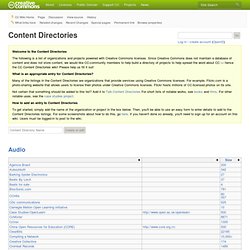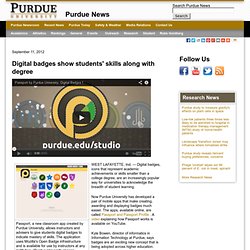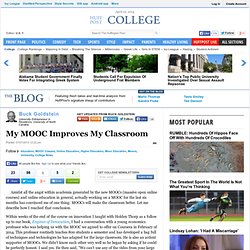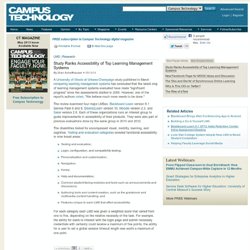

Netsmart. How can we use digital media so that they help us become empowered participants rather than passive consumers?

In Net Smart, I show how to use social media intelligently, humanely, and, above all, mindfully. Download the introductory chapter (PDF) here. Mindful use of digital media means thinking about what we are doing, cultivating an ongoing inner inquiry into how we want to spend our time. I outline five fundamental digital literacies, online skills that will help us do this: attention, participation, collaboration, critical consumption of information (or "crap detection"), and network smarts. U. Courses How courses work: (contact me via howard@rheingold.com if you want to get on a notification list.

Each cohort is limited to 35 students. Tuition is $300 for individuals, $500 if your employer reimburses, $250 if you have taken a previous RU course. Synchronous sessions involve streaming audio, video, text chat, slides. Currently Offered Introduction to Mind Amplifiers. The Rubric - Rubric for Online Instruction. Universal Design of Instruction. By Sheryl Burgstahler, Ph.D.

(Adapted from the publication Universal Design of Instruction: Definition, Principles, Guidelines, and Examples ) Students in academic classes come from a wide variety of ethnic and racial backgrounds. For some, English is not their first language. Resources » Journals » Journals A-D » American Journal of Distance Education. Submissions. Author Guidelines Manuscript Submissions The aim of The International Review of Research in Open and Distance Learning (IRRODL) is to disseminate scholarly information to scholars and practitioners of open and distance learning and teaching worldwide.

Authors submit their manuscripts online by registering with this journal, logging in, clicking the New Submission link, and following the screen instructions through a five-step submission process. NOTE: An authentication email is sent automatically, which requires the registrant to validate his or her email address. Users cannot log in to IRRODL’s Web site until they validate their email addresses. Content Directories. Welcome to the Content Directories The following is a list of organizations and projects powered with Creative Commons licenses.

Since Creative Commons does not maintain a database of content and does not store content, we would like CC-community members to help build a directory of projects to help spread the word about CC — hence the CC Content Directories wiki! Please help us fill it out! What is an appropriate entry for Content Directories? Many of the listings in the Content Directories are organizations that provide services using Creative Commons licenses. Not certain that something should be added to this list? How to add an entry to Content Directories. Connectivism: A Learning Theory for the Digital Age.
Connectivism: A Learning Theory for the Digital Age December 12, 2004 George Siemens Update (April 5, 2005): I've added a website to explore this concept at www.connectivism.ca Introduction.

White Paper Criteria. Accessibility of DO-IT Websites. Mozilla Firefox Start Page. Glogster EDU: A complete educational solution for digital and mobile teaching and learning. Planning a Class with Backward Design. Blackboard Learn. Digital badges show students' skills along with degree. September 11, 2012 WEST LAFAYETTE, Ind. — Digital badges, icons that represent academic achievements or skills smaller than a college degree, are an increasingly popular way for universities to acknowledge the breadth of student learning.

Now Purdue University has developed a pair of mobile apps that make creating, awarding and displaying badges much easier. The apps, available online, are called Passport and Passport Profile . A video explaining how Passport works is available on YouTube. Buck Goldstein: My MOOC Improves My Classroom. Amidst all the angst within academia generated by the new MOOCs (massive open online courses) and online education in general, actually working on a MOOC for the last six months has convinced me of one thing: MOOCs will make the classroom better.

Let me describe how I reached that conclusion. Within weeks of the end of the course on innovation I taught with Holden Thorp as a follow up to our book, Engines of Innovation, I had a conversation with a young economics professor who was helping us with the MOOC we agreed to offer on Coursera in February of 2014. Study Ranks Accessibility of Top Learning Management Systems. LMS | Research Study Ranks Accessibility of Top Learning Management Systems By Dian Schaffhauser 05/13/13 A University of Illinois at Urbana-Champaign study published in March comparing learning management systems has concluded that the latest crop of learning management systems evaluated have made "significant progress" since the assessments started in 2005.

However, one of the report's authors noted , "We believe much more needs to be done. " The review examined four major LMSes: Blackboard Learn version 9.1 Service Pack 6 and 8, Desire2Learn version 10, Moodle version 2.3, and Sakai version 2.8. The disabilities tested for encompassed visual, mobility, learning, and cognitive. For each category each LMS was given a weighted score that varied from one to five, depending on the relative necessity of the task. How Learners Can Be On Top of Their Game: An Interview with James Paul Gee. Debmorrison. Rubric for Online Discussion Board Participation. Rubric for Asynchronous Discussion Participation Name___________________________________________________________ Asynchronous discussion enhances learning as you share your ideas, perspectives, and experiences with the class.

You develop and refine your thoughts through the writing process, plus broaden your classmates’ understanding of the course content. Use the following feedback to improve the quality of your discussion contributions. CTE - 7 Principles of Good Practice in Online Teaching. CTE Home >> Resources >> Online Resources >> Online Teaching and Learning Resource Guide >> Teaching Practices >> 7 Principles of Good Practice in Online Teaching Arthur Chickering and Zelda Gamson published their Seven Principles in 1987, synthesizing fifty years of research to develop seven principles that they viewed as core to effective teaching: Good Practice Encourages Student-Faculty Contact Good Practice Encourages Cooperation among Students Good Practice Encourages Active Learning Good Practice Gives Prompt Feedback Good Practice Emphasizes Time on Task Good Practice Communicates High Expectations Good Practice Respects Diverse Talents and Ways of Learning.
The Conscious Competence Ladder - Learning Skills from MindTools. Keeping Going When Learning Gets Tough Also called the "Conscious Competence Matrix," the "Learning Matrix," and the "Four Stages of Learning. " Do you know what you don't know? © iStockphoto/winterling. Kathy Schrock's Guide to Everything - Home Page. Shawn Achor: The happy secret to better work. Unit 2 (Week 4 & 5): The Adult Learner in Distance Education and Technologies. Bloom's Digital Taxonomy - bloom's+Digital+taxonomy+v3.01.pdf.
Bloomin' Apps. This page gathers all of the Bloomin' Apps projects in one place.Each image has clickable hotspots and includes suggestions for iPad, Android, Google and online tools and applications to support each of the levels of Bloom's Revised Taxonomy.I have created a page to allow you to share your favorite online tool, iOS, or Android app with others. Cogs of the Cognitive Processes I began to think about the triangular shape of Bloom's Taxonomy and realized I thought of it a bit differently.Since the cognitive processes are meant to be used when necessary, and any learner goes in and out of the each level as they acquire new content and turn it into knowledge, I created a different type of image that showcased my thoughts about Bloom's more meaningfully.Here is my visual which showcases the interlocking nature of the cognitive processes or, simply, the "Cogs of the Cognitive Processes".
Distance Education in Nursing, Third Edition. Bloom's Planning, Activity and Assessment Tools - Bloom's Digital Web2.0. Bloom's Taxonomy Presented Visually. All things Blooms. Articulating context. If you have dropped into this Course Design Tutorial from somewhere else, you might wish to start at the introduction, overview, or table of contents.
ACC 101: Accessible Course Creation - LD. The Imperfect Art of Designing Online Courses - The Digital Campus. Software and Web applications used in courses. Learning-to-Adapt-White-Paper_Education-Growth-Advisors_March-2013.pdf. Workplace Bullying. Free Testing and Quizzing Tools for Online Education. 20+ Tools to Create Your Own Infographics. A picture is worth a thousand words – based on this, infographics would carry hundreds of thousands of words, yet if you let a reader choose between a full-length 1000-word article and an infographic that needs a few scroll-downs, they’d probably prefer absorbing information straight from the infographic.